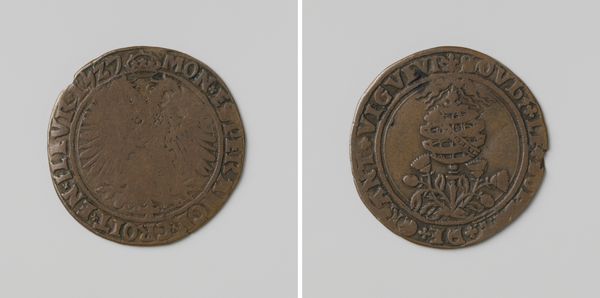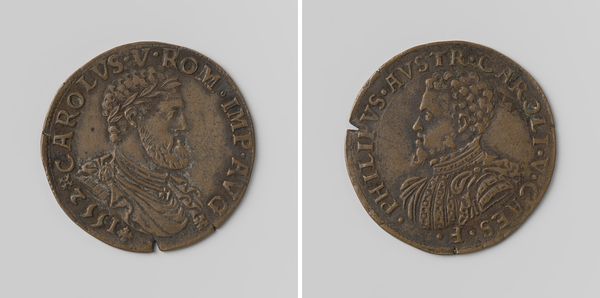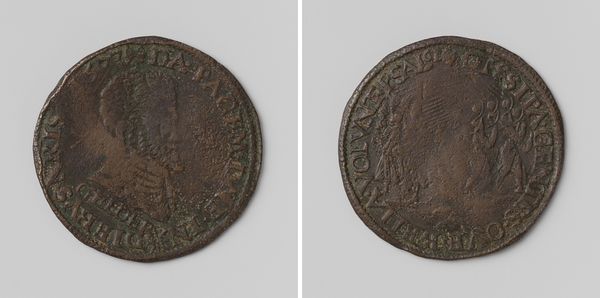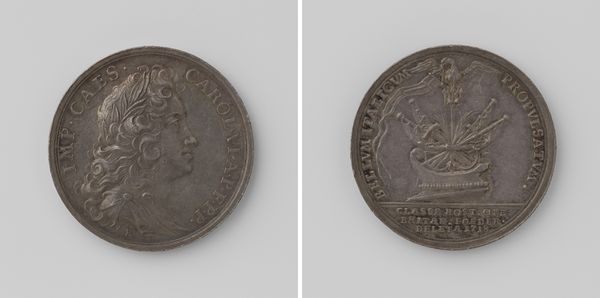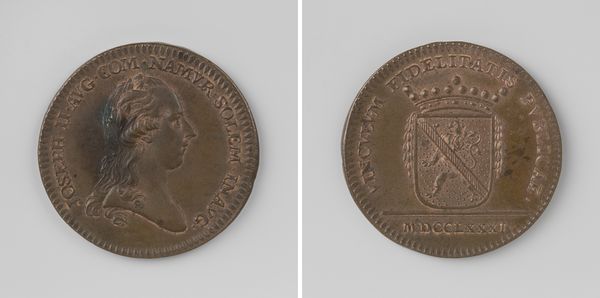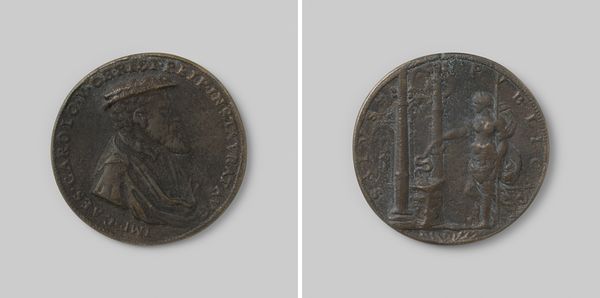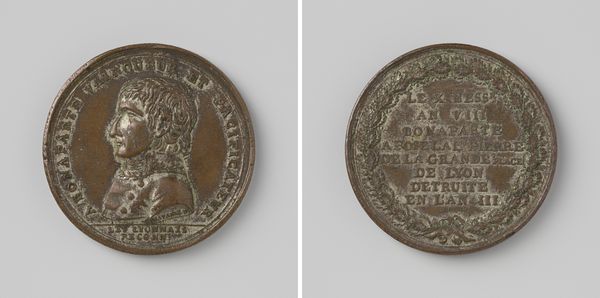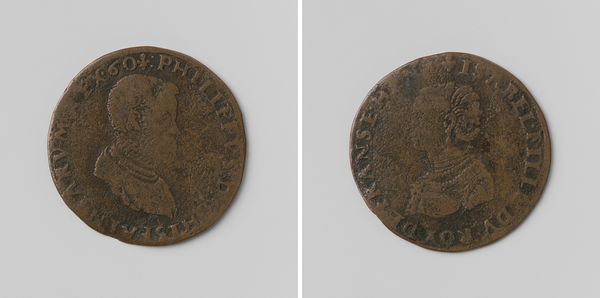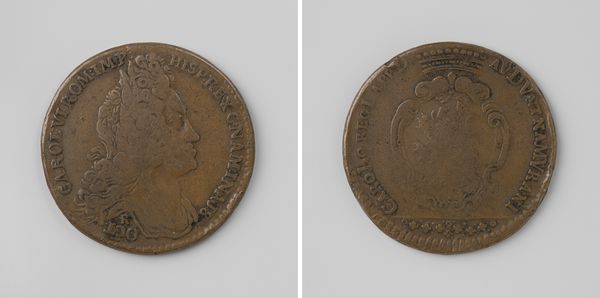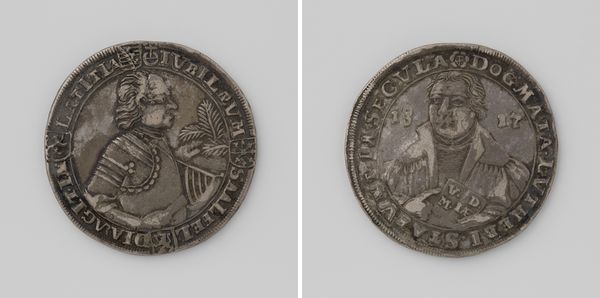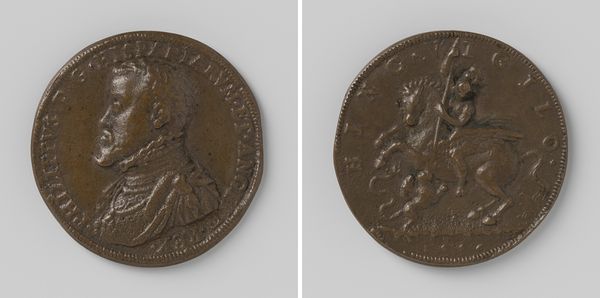
Viglius ab Aytta Zuichemus, voorzitter van de Geheime Raad te Brussel 1561
0:00
0:00
carving, metal
#
portrait
#
carving
#
metal
#
11_renaissance
#
carved
Dimensions: diameter 2.8 cm, weight 49 gr
Copyright: Rijks Museum: Open Domain
Curator: This rather somber portrait medallion, "Viglius ab Aytta Zuichemus, voorzitter van de Geheime Raad te Brussel," was created by Jacques Jonghelinck in 1561. It's crafted from metal, likely bronze. What are your first thoughts on it? Editor: It feels incredibly dense, almost weighty. The patina is rich and deep, giving it an aged gravitas. And that portrait—it projects such authority. Curator: Jonghelinck was master of the Brussels Mint. So it stands to reason he might take an interest in something of this nature, wouldn't you say? The materials used certainly mirror the production of coins. There’s such an inherent social and political link given that his role literally involved manufacturing wealth in society. Editor: Absolutely. Medallions like this, though, weren't merely currency, they were statements. They functioned as personal billboards of power and prestige within Renaissance society. Think of the Council depicted there-- it’s no accident he presents this figure in connection to such institutions of political power. Curator: Let's delve into that. Jonghelinck, I think, consciously exploits the circular format and material substance for symbolism, turning utilitarian processes into the vehicle itself. Editor: True, look at the detail captured in such a small format; the intricacy speaks to the technical mastery present at the Brussels mint at that point. He probably utilized fine carving and casting methods, transforming base metal into a potent object of personal and political branding. Curator: We have Viglius on one side; and what appears to be his personal emblem with the words "Vigilate et Orate," on the other. “Watch and pray,” in other words. Editor: So we’re seeing, almost literally, the face of power allied to religious virtue. That fusion shaped the period so acutely, I think; it’s not surprising the Council chose this motto in this environment. Curator: Given Jonghelinck's profession, this object acts as more than art--it stands testament to the fusion of power, craft, and the means of production in creating, well, an enduring icon, of the sort of power represented in his circles. Editor: Ultimately, this medallion is an object of civic portraiture as a symbol that invites the public to recognize that man’s lasting contributions, and the very social constructs surrounding authority, both secular and sacred.
Comments
No comments
Be the first to comment and join the conversation on the ultimate creative platform.

